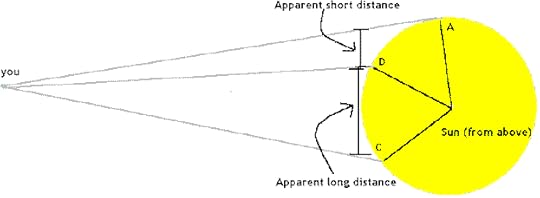Michael Flynn's Blog, page 58
February 3, 2011
In De Nile
"If any of the violence is instigated by the government, it should stop immediately," Gibbs said, while declining to speculate whether the Egyptian government was in fact behind the violence.
Presumably, if the violence is instigated by the protesters or by free-lance Mubarak supporters, it may then proceed unabated.
February 1, 2011
Down the Memory Hole
Notice how swiftly Kermit Gosnell fell off the front pages, or any pages?
"In the wake of Kermit Gosnell, however, in the wake of Andrew Rutland, Stephen Brigham, and Abu Hayat, there is no following-up, no digging through records; there is no curiosity..." -- Elizabeth Scalia
January 30, 2011
Saturday within the octave
We have this:
h/t Mark Shea
The bon mot
This was written during the Carter Administration. h/t Jerry Pournelle
“It seems to me, then, that by 2000 AD or possibly earlier, man’s social structure will have utterly collapsed, and that in the chaos that will result as many as three billion people will die. Nor is there likely to be a chance of recovery thereafter.”
Isaac Asimov
January 29, 2011
No, it doesn't mean what you think it does
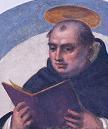
Today is the feast of St. Thomas Aquinas. Do something logical in his honor.
Now properly speaking, it is the feast of his translation; that is, when his remains were moved (28 January, 1369) from the site of his death to the Dominican Church in Toulouse. Just as the Marines do not leave a man behind, neither do the Dominicans.
The feast was initially celebrated, as is traditional, on 7 March, the data of his death, and is so-listed in older missals. However, this resulted in what is called a "clashing of feasts," since 7 March was also the date on which Perpetua and Felicity were martyred. The Feast of St. Thomas demoted them to a Commemoration. So in 1969, Tom was moved to his translation date and Perpetua and Felicity restored to a place of greater honor. (They are, after all, among those mentioned in the roll call of the ancient Roman Canon used in the Mass.
Oddly enough, there were no festivities in the streets. But then this is no longer the age of reason that the middle ages were. There is a humorous comment on the situation, here.
+ + +
However, the Angelic Doctor keeps turning up in odd places, often accompanied by his old pal the Stagerite. Today's unexpected appearance is here: Nonlinear Brain Dynamics and Intention According to Aquinas
(The rest wouldn't load on LiveJournal. Continued here.)
January 19, 2011
Iron Shirts
January 15, 2011
A Spotty Record
Cross-Posting and the Sunspots
Galileo is often set up as the poster boy of the scientific revolution; but as a couple of posts at The Renaissance Mathematicus point out:
all of the telescopic discoveries for which Galileo is famous were made independently by other observers in the same period and if he had never existed it would have made little or no difference to the development of telescopic astronomy.
What Galileo was especially good at was seizing credit and virulently attacking anyone who contested with him. A summary of the essays at The Renaissance Mathematicus plus other material from the Galileo Project follows. The Renaissance Mathematicus site is a marvelous one for anyone interested in the history of science. The more detailed essays can be found at the links below.
The sunspot controversy: Spotting the Spots
The moons of Jupiter controversy: One Day Later
The Sunspots -- A Chronology
Chinese, Islamic and medieval European observers had noted and recorded sunspots by naked eye observations over the centuries. But these had no impact on the development of astronomy. Astronomers back then were interested in the motions of celestial bodies and not their physical properties. Astronomy in the West was not even considered part of physics, but as a part of mathematics. In China, it was simply arithmetic. Also, the sun was considered to be pristine and so the sunspots were seen as clouds, planets, et al.
Some noted sightings include:
+ + +AD 1607. Using a camera obscura, Johannes Kepler observed an especially large sunspot. But he thought it was a transit of Mercury which was happening at the same time. (It was Kepler who coined the term camera obscura.)
 Galilean telescope, typical of the times.
Galilean telescope, typical of the times.The Telescopic Era
Eyeball astronomy could not make the sort of quantifiable observations of the sun that the new physical astronomy would demand. In AD 1608, the Dutchman Jean Lippersheim of Middelbourg invents the telescope and the race was on in the "look-see-gosh-wow" era of astronomy. In the early 1610s, four men deliberately turned their telescopes to the sun and each in a way has a "first" to his name. They are Thomas Harriot, Englishman, who first observed and recorded sunspots telescopically; Johann Fabricius, Frisian, who first published an account of the sunspots; Galileo Galilei, Italian, who first proved rigorously the nature of the sunspots (confirming an intuition of Fabricius'); and Christoph Scheiner, SJ, German, who devised the method of recording sunspot changes over time and measured and discovered the differential rotation of the sun. Of them, only Scheiner and Galileo were aware of each other's work, and engaged in a pamphlet war for which the term "cross-posting" had not yet been invented. It seems clear to historians now that all four men were making their observations within a few months span of one another. When it's time to railroad, people start railroading.
Complicating the priority question is the fact that dual calendars were then in use: the Julian calendar in Protestant countries and the more correct Gregorian calendar in Catholic countries.
 Thomas Harriot
Thomas HarriotThomas Harriot (see left) corresponds with Johannes Kepler about optics and discovers Snell's Law of refraction before Snell does. He had earlier gone with Raleigh to Virginia as a cartographer, and in 1605 was briefly imprisoned in the aftermath of the Gunpowder Plot.
AD 1609. Harriot begins making telescopic observations. His Moon drawing (early August) is the first on record and precedes Galileo's study of the Moon by several months.
AD 1610. Christoph Scheiner SJ is teaching Hebrew and mathematics (physics and astronomy) in Ingolstadt. He lectures on sun dials, practical geometry, astronomy, optics and the telescope. After hearing of Galileo's initial discoveries with the telescope, he immediately sets out to obtain good telescopes with which to scrutinize the heavens. He verifies Galileo's discoveries of the Lunar mountains and Jovian moons, and heaps praises on him.
 Harriot's notes on the sunspots
Harriot's notes on the sunspotsAD 1610. December. Harriot observes sunspots and makes a record (see right). He shares the observations with a group of correspondents in England, but does not publish them.
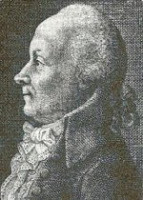 Johann Fabricius
Johann FabriciusAD 1610. Winter. Johannes Fabricius, son of David Fabricius, (left) brings back a telescope from the University of Leiden, where Rudolph Snel van Royan is professor of mathematics and has been lecturing on the telescope. (Snel's son will be the Snel of Snell's Law, which Harriot has already discovered.)
AD 1611, 27 February (9 March in Catholic lands), at dawn. Johannes Fabricius directs the telescope at the rising sun and sees several dark spots on it. He calls his father, and together the two investigate this phenomenon. They direct their instruments to the edge of the Sun, and when their eyes adjust to the brightness slowly move toward the Sun's center. This method is rather painful, and the two quickly switch to a camera obscura.
Over the next several months they track spots across the Sun's face and find that a dozen or so days after they disappear from the western edge of the Sun they reappear on the eastern edge. Hmmm.
AD 1611, March/April. Christoph Scheiner in Ingolstadt observes sunspots using a telescope filtered with colored glass
 Pamphlet of Johann (& D) Fabricius
Pamphlet of Johann (& D) FabriciusIt contained no drawings or data
AD 1611, 13 June. In Wittenberg, the top Lutheran school, Johann Fabricius publishes a pamphlet with the somewhat snappy title De Maculis in Sole Observates et Apparente earum cum Sole Conversione Narratio ("Narration on Spots Observed on the Sun and their Apparent Rotation with the Sun"). known by its nick-title De Maculis. (See left) It is just in time for the great autumn book fair in Frankfurt, a book fair held annually to this very day. In the tract Johann describes the observations made by him and his father, but without giving dates or times or drawing a picture of the spots. He then states his opinion that the spots are on the Sun and that the Sun therefore probably rotates on its axis. He cannot prove this, however; and his father disagrees with him. The pamphlet draws little attention. It is floridly written, and lacks a powerful political patron. Galileo and Scheiner likely did not know of it; but Kepler, when he does learn of it, credits Johannes Fabricius with the discovery of the sunspots.
Christoph Scheiner
AD 1611, October. Scheiner (right) begins his systematic study of sunspots. He writes of his discoveries in a series of letters to Marcus Welser, the wealthy Augsburg banker, scholar, and patron of science. Welser immediately sends copies to Galileo, asking for his comments.
AD 1611, December. David Fabricius (the father) writes to Michael Maestlin (Kepler's old teacher) that he disagrees with his son and does not believe the spots were actually on the Sun's body, although the center of their motions clearly lay in the Sun.
The Great Pamphlet War
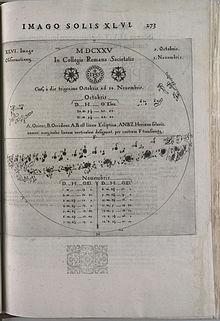 Depiction of sunspots by Christoph Scheiner, SJ
Depiction of sunspots by Christoph Scheiner, SJHis method of depiction became the standard.
AD 1612, January 5. Marcus Welser publishes Scheiner's first three letters in Augsburg as Tres Epistolae de Maculis Solaribus Scriptae ad Marcum Welserum ("Three Letters on Solar Spots written to Marc Welser") (See right). They appeared under the nom de plume "Apelles latens post tabulam," or "Apelles waiting behind the painting." (This pseudonymity was a common practice in the Renaissance and Early Modern Age.)
Recall that physics was then distinct from the mathematical field of astronomy. The physicists said that the sun was perfect, so Scheiner interpreted sunspots as caused by satellites of the Sun whose shadows were projected on to Sun's disk as they cross in front of it, but were invisible at other points in their orbits. Their orbits had to be very close to the Sun for their shapes were foreshortened as they approached its edge.
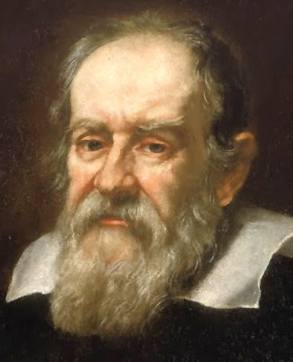 Galileo Galilei
Galileo GalileiAD 1611-12, Winter. Galileo Galilei (see left) receives a copy of Scheiner's tract from Welser along with a request for his comments; but he is ill and directing his energies to the publication of his Discourse on Bodies in Water.
AD 1612, April. Galileo begins his systematic study of sunspots. He is assisted by his protégé Benedetto Castelli, who is then in Florence. (Castelli develops a method of projecting the Sun's image through the telescope, which makes it possible to study the Sun in detail even when it was high in the sky. Father Castelli succeeded to Galileo's chair at Pisa and one of his students will be Torricelli. It will be a letter to Fr. Castelli that gets Galileo in deep doo-doo later on.) Galileo writes his first letter to Welser on sunspots, arguing that the spots are on the surface of the Sun or in its atmosphere, and although he cannot say for certain what they are, they appear to him most like clouds.
While Scheiner writes in Latin, the international language, Galileo has written his letter in Italian, and Welser must have it translated before Scheiner can read it. Meanwhile, Scheiner continues his solar observations, and so by the time he has mastered Galileo's letter he has already finished two more letters of his own to Welser. He now adds a third, in which he comments that his observations agreed precisely with those of Galileo but defends his judgment that sunspots are solar satellites. So far, both theories seem to fit the data.
AD 1612, August. Galileo writes a second letter to Welser in which he shows a large number of sunspot observations, each made at roughly the same time of the day, so that the Sun's orientation is the same and the motion of the spots across its disk can be easily followed. This was a clever move in observational methodology.
AD 1612, October. Welser publishes Scheiner's second series of letters under the title De Maculis Solaribus . . . Accuratior Disquisitio ("A More Accurate Disquisition . . . on Sunspots"). Scheiner maintains his pseudonym of Apelles... "or, if you prefer, Odysseus under the shield of Ajax." Those late Renaissance/Early Modern folks were nuts about strewing classical allusions into everything.
AD 1612, December. Upon receiving Scheiner's second tract Galileo writes yet a third, attacking Apelles's opinions once again. You will notice that they are cross-posting. Galileo has just read a pamphlet written before his own most recent letter and therefore not cognizant of the contents of that letter.
AD 1613, Summer. Galileo's three letters are published in Rome by the Lyncean Academy (of which he is a star member). About a third of the copies contain reprints (in their original Latin) of the two three-letter tracts by "Apelles" (whose secret identity has in the meantime been revealed). No contest. Scheiner's language is convoluted and in Latin, while Galileo is colloquial and amusingly polemical. But not only did Galileo demolish Scheiner's argument, he also criticized Scheiner's a priori method of argument: the Sun is perfect, therefore it cannot have spots on its surface. Galileo could never let anyone disagree with him without calling him stupid. That the Sun is perfect was the "consensus science" of the physicists, and mere mathematicians (astronomers) had no place to disagree. But part of the revolution is that astronomy is shifting over from the math department to the physics department, and neither physicists nor astronomers are quite in their new roles yet. We cannot fault Scheiner as foolish for accepting the consensus physics of the past couple thousand years. What we can do is admire him when, convinced by Galileo's mathematical analysis of the spots, he changed his mind and agreed. Now, that's a scientist!
The proof that convinced Scheiner: The points A, B, and C (above) are at equal distances apart on the surface of the Sun. Assuming the Sun rotates at a constant rate, the letters represent positions of a sunspot at equal intervals of time. From your perspective on Earth, the spot moving from A to B only goes a little ways, so appears to move slowly. On the other hand, the spot moving from B to C covers a lot of ground, and appears to move rapidly.
If the spot were a planet revolving some distance away from the Sun, it's speed would not appear much different as the planet went past the limb and then across the center of the Sun's image. This analysis not only showed that spots on the surface accounted for the observations, but that other models could not account for them.
In those days, the method of composition and resolution demanded that not only did you need to develop a theory T that accounted for the observations O, but you had to show that only T could account for them.
Up to this point, Galileo and Scheiner have been friendly. Scheiner had treated Galileo with great respect, and Galileo had been courteous in his language. But Galileo's attacks began to evoke counter-attacks and enmity between them grew.
AD 1616. Johannes Fabricius dies, his pamphlet still relatively unknown. He should have sent it to Marcus Welser.
AD 1616/1617. Christoph Scheiner leaves Ingolstadt and joins the Roman College.
Aftermath
AD 1623. Galileo publishes The Assayer. In it, he complains about those who would steal his priority of discovery, mentioning the case of sunspots but not mentioning Scheiner specifically. Scheiner takes the complaint to be directed at him and becomes extremely hostile to Galileo thereafter. Ironically, The Assayer attacks fellow-Jesuit Grassi over the Comets of 1618. Grassi, who had observed them meticulously, concluded that they were on non-circular orbits from beyond the Moon. This upset the Copernican system of circular orbits. Galileo, who had not observed them, claimed they were obviously emanations in the Earth's atmosphere. Then he heaped ridicule on Grassi and wrote an otherwise inspiring essay on the scientific method.
Later, when Galileo has managed to insult his old friend and defender, the Pope, and gets in the aforesaid deep doo-doo, Scheiner, Grassi, and the other Jesuit astronomers will sit on their hands, even though by then most of them (including Clavius) were well-disposed to the Copernican system.
AD 1630. Scheiner publishes Rosa Ursini ("The Rose of Orsini"). This will become the standard text on sunspots for over a century. In it, Sheiner still maintains that he is the discoverer of sunspots, but has abandoned the perfection of the heavens and his opinion that the spots are solar satellites (giving due credit on this point to Galileo, whom he otherwise insults.) Scheiner's method of illustrating the motion of individual spots across the face of the Sun became the standard way of rendering this motion and the changing shapes of the spots. Galileo had confirmed Fabricius' interpretation that the spots were located on the surface of a rotating sun, as revealed by the foreshortening effect when they near the limb. In the Rosa, Scheiner takes it a step further: by measuring the rotation period with higher precision, he is able to show that the spots farther from the equator move more slowly, thus establishing the sun's differential rotation, now believed to be the source of the sunspots.
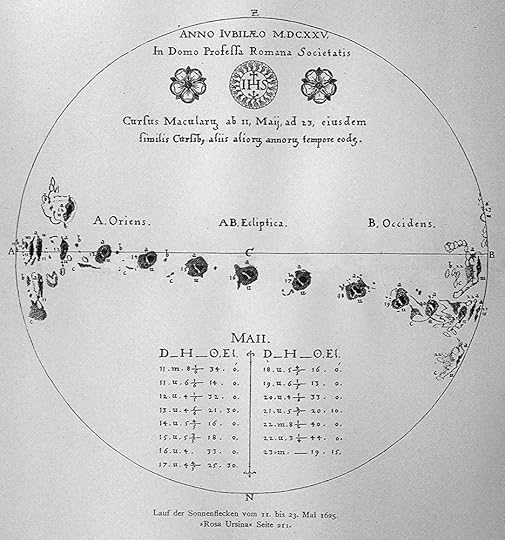 Sunspot record from Scheiner's Rosa Ursini
Sunspot record from Scheiner's Rosa Ursini
Meanwhile....
AD 1627. Thomas Harriot dies. The executors of his estate publish a small portion of his mathematical work under the title Artis Analyticae Praxis. Eventually, everyone will realize that he had been the first to telescopically study sunspots.
Fabricius has also died, but eventually everyone will realize that he was the first to publish. Kepler is the first to give him credit.
Other pertinent essays at the Renaissance Mathematicus:
Putting Galileo in his proper place in the history of science.
Cassini was the Real Founder of Telescopic Astronomy
January 10, 2011
At the End of an Age
Crossing the Hairs? Or Splitting Them?
When politicians use imagery tinged with violent and military connotations - like "campaign" or "targeted" or "behind enemy lines" (when speaking of opposing politicians who have won in "our" territory) is it any wonder if some take it too far?
Remember when a late-night comedy show portrayed a picture of the president with a gunsight superimposed and the caption "snipers wanted"? Or when a prominent actor called for the death of a prominent congressman - and his whole family? Then we have this map of targets "behind enemy lines" with its ominous bulls-eye target symbols. Enemies, note; not opponents.
Rather incendiary. No wonder the media jumped right on it.
Now that's really ominous. "It's time to take a stand" is much more serious than "targeting strategy", for what is a "stand" but the place where the hunter hides waiting for Bambi to come near. And the engineering symbols for geometrical positioning or location are far more ominous than any old bulls-eyes. They have been likened to rifle scopes, although the hairlines on a scope do not actually extend beyond the circle of the lens. However, those in a lather are unlikely ever to have seen an engineering drawing (or a rifle scope, for that matter).
[image error] Cf. Wikipedia GD&T Engineering Symbolsh/t Verumserum
Now, if only we could figure out the political leanings of someone whose list of favorite books included "Mein Kampf" and "The Communist Manifesto."
The killer's YouTube video titled "My Final Thoughts: Jared Lee Loughner!" tells us that: "If B.C.E. years are unable to start then A.D.E years are unable to begin. B.C.E. years are unable to start. Thus, A.D.E years are unable to begin." Well, that's politics, I suppose.
January 8, 2011
The How To... Series
James Hannam at Quodlibeta wrote a delicious parody of a certain style of amateur writing, which I am pasting here. Some of his comments are presented afterward to aid others in fabricating fantasy history. You can try the game with Against Socrates, Against Plotinus, etc.
Against Hannibal
To ask whether or not the great Carthaginian general Hannibal ever actually existed might seem rather pointless. It might be an exercise for a student learning about the nature of historical evidence, but not something any serious scholar would waste time on. But maybe we should not be too hasty in acquiescing with the opinion of establishment historians.
In fact, although there is plenty of writing about Hannibal, none of it is contemporary and there is no archaeological evidence for him at all. Furthermore he is not mentioned in any Carthaginian sources, which is incredible, given he was supposed to be their greatest leader! We find when we actually try to pin him down he tends to recede further into the mists of time. His exploits, such as leading elephants over the Alps, are clearly legendary and it is not hard to find a motive for the creation of this colorful character by Roman writers.
The author of the fiction was Cato himself, as Cato wrote the earliest Roman History. But it was intended simply as a justification for a further war with Carthage. It contained the details of Hannibal's alleged campaigns against the Romans, including his victories on Italian soil. Cato brilliantly combined the truth with his own anti-Carthaginian propaganda with the intention of goading Rome into another wholly unjustified war with the old enemy. Once the war was over and Carthage was razed to the ground, the Romans were able to ensure that only their version of history survived.
Therefore the myth of the great Carthaginian war leader became an accepted fact. Later Roman historians like the notoriously unreliable Livy simply assumed Cato's fabrications were true.
+ + +
Notes on Technique: How to Debunk History
(also by James Hannam, though with some additions by yr. obt. svt.)
establishment historians. Imply that there's a plot by "establishment" academics stifling debate.
no archaeological evidence. Make it sound unsupported; but don't mention that the Romans razed the Carthage to the ground and there simply is no archeological evidence of any sort.
not mentioned in any Carthaginian sources. Make it sound as if there actually are Carthaginian sources, but they make no mention of Hannibal.
clearly legendary. Use proof by bald assertion. "Clearly" is a nice touch. Pretend to be incredulous even while peddling the notion.
motive for the creation. If you can invent a motive for fabrication, you can thereafter assume that it is a fabrication.
rid itself of the competition. It helps to throw in a few true statements. Not only does this help conceal the moment when you slip into fantasy, but it gives you a fallback to defend the remainder of your assertions.
Romans rewrote history. Use exaggerated generalizations whenever possible. If there is an eyewitness account, point out that eyewitnesses have been proven "in peer-reviewed literature" to be unreliable.
author was Cato. Designate a villain. Don't worry about proving this; just assert it. Slide over seemlessly from the background material to the theorizing.
wrote the earliest Roman History. Another true statement to bolster the appearance of research.
Cato's history contained... Since Cato's history has not survived, you can make bland assertions about what it contained.
brilliantly combined truth with propaganda. You can appear judicious by giving Cato chops for his brilliance. Since the text has not survived, you need not worry about being contradicted on what it "combined."
ensure only their version survived. This enables you to dismiss all corroborating sources as forgeries or propaganda.
notoriously unreliable Livy. The Attack of the Gratuitous Adjective. Denigrate contrary sources. Not just unreliable, but notoriously unreliable.
assumed Cato's fabrications were true. Imply that Livy and others were stupid and did not think of doing any independent research.
A few other pointers would include amplifying on the conspiracy to maintain the myth of Hannibal, et al. and wallowing in self-congratulation on your own bravery in rising to expose the myth.
January 7, 2011
Township Alien
is the Japanese title for Eifelheim. Here is the cover ("top" and "bottom"):
The info for those who read Japanese is here: A page which confirms my faith in Google Translator not at all.
Michael Flynn's Blog
- Michael Flynn's profile
- 237 followers


